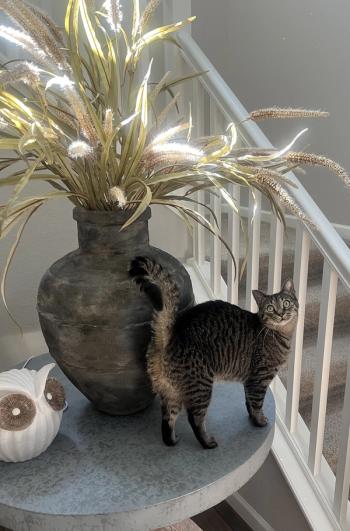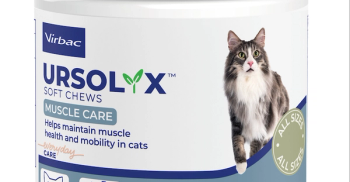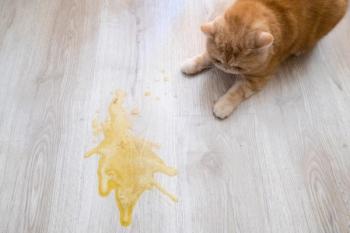
- February 2017
- Volume 2
- Issue 1
The Keys to Kitten Socialization
Ensuring that clients understand the importance of socialization—and how to do it right—is the key to raising a calm pet that is comfortable in multiple surroundings.
It is not uncommon for cats to run and hide when visitors enter the home or when they are exposed to a carrier for travel to the veterinary clinic. Thirty-eight percent of cat owners find it stressful to take their cat to the veterinarian, and 58% report that their cat hates going to the veterinary clinic.1 Cat owners often consider fear-related reactions associated with visitors, veterinary visits, husbandry care, and vehicular travel to be “normal” behaviors, but they don’t have to be.
Keeping cats calm and comfortable begins with early exposure and positive socialization. With proper socialization, cats are more amenable to receiving veterinary and home health care because they are more tolerant of handling.
What Is Socialization?
Socialization is the process of learning to communicate with and relate to humans, members of the same species, and other animals. A hallmark of this period is social play.
For cats, the socialization period occurs between 2 and 7 weeks of age but can extend up to 14 weeks. It begins with self-play and batting objects followed by social play among littermates by about 3 weeks.2 Social play increases from 4 to 11 weeks of age and peaks by 12 weeks. It begins to wane after 12 weeks, and object play predominates until about 4 months of age when it begins to decline gradually.2
Socialization includes localization, which is the process of learning to be attached to specific environments. Cats tend to be most comfortable with environments to which they were exposed at a young age. Both socialization and localization shape future behavioral responses and prepare cats for myriad social and environmental experiences later in life.
Socialization and localization should include pleasant exposure to various environments, sounds, people, animals, and novelty. Pleasure can be enhanced by using “kitten-approved” reinforcers, such as special treats, toys, and petting around the head.
Early studies evaluating the effect of kitten handling on subsequent behavior toward people3-5 showed that handling by multiple people for as few as 5 minutes a day can have lifelong benefits, especially if done prior to 7 weeks of age.3-5 Other studies have suggested that friendliness and boldness of temperament may have strong roots in genetics, specifically linked to the behavior of the tom.6 Kittens sired by a sociable tom are more likely to be sociable. Kitten socialization with people can be facilitated by the presence of the queen if she is sociable and calm. Kittens are observational learners and will take social cues from the queen. It is much more difficult to socialize a kitten to people and other animals without early positive experiences before 7 weeks of age. By 14 weeks, social play between kittens is more likely to result in fighting.
A cat that is obtained after the socialization period, with an unknown or suspected lack of early positive experiences, can be socialized, but the process is much more difficult and ultimately will take longer.
Client Education Is Crucial
It is important for clients to understand that socialization is not simply about exposure to varied situations and people. Rather, it is about making exposure fun and positive from the start.
The following recommendations can help clients make the socialization process more effective:
- Take the kitten to socialization classes, often called "kitten kindergarten." These group classes offer controlled exposure to new people, cats, and environmental stimuli (Figure 1).
- Ensure gentle daily handling by multiple people. Gentle massage while providing special treats will make the experience pleasant. Social experiences with people may include kitten parties or inviting friends to the home to play with the kitten. Catnip may be sprinkled on the floor to foster exploration. Synthetic feline pheromones may enhance socialization experiences and reduce fear in some individuals. Wand toys may be offered to engage the kitten in interactive play with visitors yet at a social distance from unfamiliar people. Visitors should avoid potentially threatening body language such as direct approach, direct eye contact, and excessive petting. The kitten should be allowed to make the first move. “Playing hard to get” and ignoring the kitten initially may spur its curiosity.
- Introduce kittens to travel carriers at an early age. The carrier should be left out in the environment for exploration, with comfortable bedding, special treats, and toys be placed inside to entice entry. Special meals fed in the crate make for continued pleasant experiences into adulthood.
- Expose kittens to vehicular travel at an early age, once acclimated to the carrier. Be sure the kitten has good footing to add a sense of security. The carrier and the bedding inside should not slide. Generally, the safest place for the carrier is behind the front passenger seat. Short trips around the neighborhood may be paired with special meals fed in the carrier. Likewise, regular fun visits to the veterinary clinic, including delectable treats from veterinary staff members and exploration of examination rooms without the need for physical or medical care, can allow for pleasant associations.
Summary
Proper socialization of kittens involves planning and preparation. Group kitten socialization classes and kitten parties can make cats more adaptable to handling and being transported to new environments. Remember that socialization and exposure are only valuable if they are enjoyable for the kitten.
Advising your clients to take a positive proactive approach from the start will prevent the need for “rehabilitation” later, and foster a better relationship.
Dr. Martin is a diplomate of the American College of Veterinary Behaviorists and a licensed practicing veterinarian in Texas. He completed a clinical behavioral medicine residency at Purdue University's Animal Behavior Clinic under the mentorship of Dr. Andrew Luescher, PhD, DVM, DACVB, in 2004 and graduated from Louisiana State University School of Veterinary Medicine. Ms. Martin is a licensed veterinary technician, veterinary technician specialist (behavior), Karen Pryor Academy certified training partner, Karen Pryor Academy faculty emeritus, and certified professional dog trainer-knowledge assessed. Ms. Martin obtained a bachelor of science in human ecology from Ohio State University and an associate degree of applied science in veterinary technology.
References:
- Volk JO, Felsted KE, Thomas JG, Siren CW. Executive summary of the Bayer Veterinary Care Usage Study. JAVMA 2011;238(10):275-282.
- Beaver BV. Feline Behavior: A Guide for Veterinarians, ed 2. Philadelphia: WB Saunders; 2003.
- Wilson M, Warren JM, Abbott L. Infantile stimulation, activity, and learning by cats. Child Dev 1965:36:843.
- Collard RR. Fear of strangers and play behavior in kittens varied with social experience. Child Dev 1967:38:877.
- Karsh EB. Factors influencing the socialization of cats to people. In: Anderson RK, Hart BL, Hart LA, Eds. The Pet Connection: Its Influence on Our Health and Quality of Life. Minneapolis: University of Minnesota Press; 207-215.
- Reisner IR, Houpt KA, Erb HN, Quimby F. Friendliness to humans and defensive aggression in cats: The influence of handling and paternity. Physiol Behav 1994;55(6):1119-1124.
Articles in this issue
almost 9 years ago
Lyme Disease: Experts Weigh in on the Controversiesalmost 9 years ago
Generation Gaps: Can't We All Just Get Along?almost 9 years ago
ACVC 2016: Hyperthyroidism in Cats - What You Need to Knowalmost 9 years ago
ACVC 2016: Poultry as Pets - A Fad with Legs?almost 9 years ago
When Should Mitral Valve Disease in Dogs Be Treated?almost 9 years ago
Tug of War: Ethical Decision-Making in Veterinary Medicinealmost 9 years ago
Managing Skin Growths in Dogs and Catsalmost 9 years ago
The Rewards of UnityNewsletter
From exam room tips to practice management insights, get trusted veterinary news delivered straight to your inbox—subscribe to dvm360.




